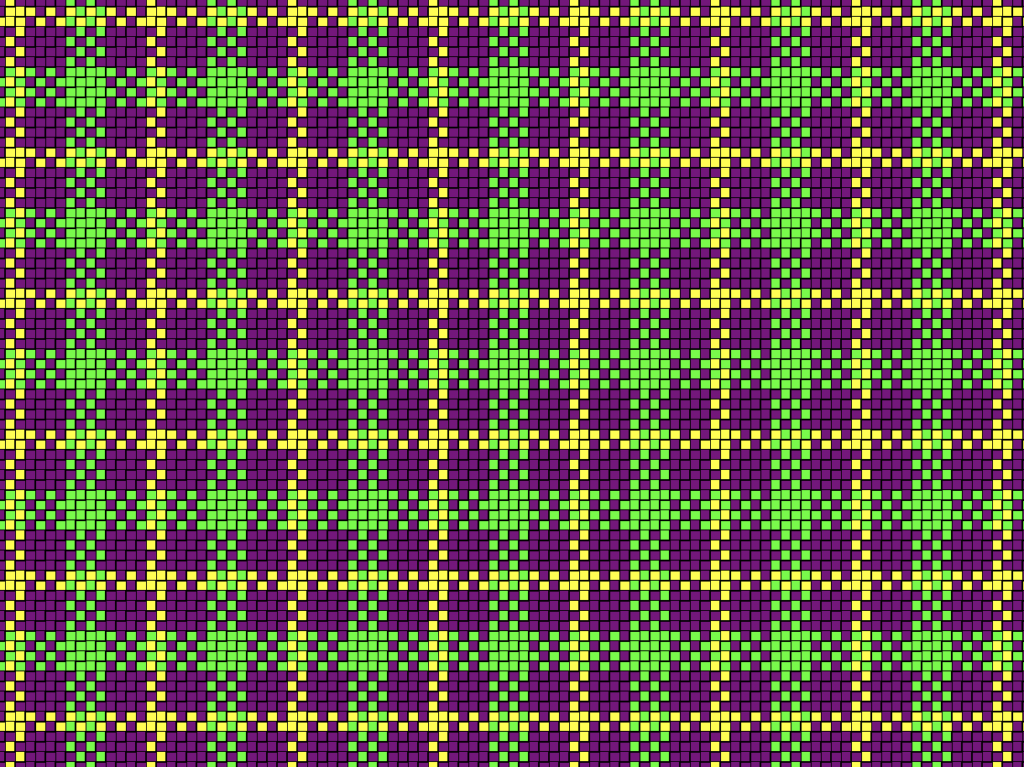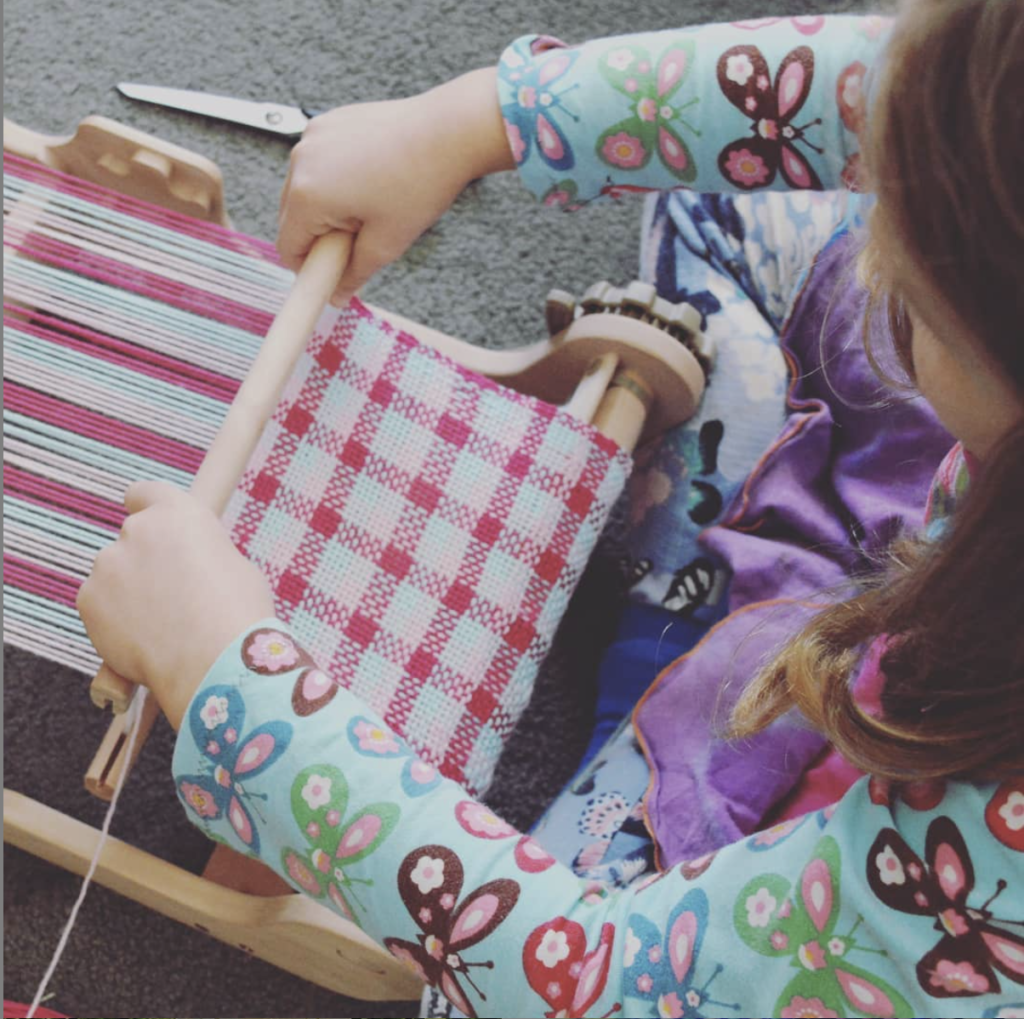Recently on the private member’s group on Facebook, we were discussing plaid and how it might look as a weaving draft. A very interesting topic!
So, first of all, what is plaid?
Quite simply, it is stripes of specific colours in the warp that are then repeated in the weft. A proper plaid will have the exact same treadling order as the warp, otherwise known as “tromp as writ” or “as drawn in” and is a balanced weave.
As the weft stripes cross the warp stripes, squares are formed.
There can be some heated discussions and disagreements about what makes a plaid and what makes a tartan. If you’re interested in researching tartan, this PDF is a detailed and interesting document.
For our member’s discussion, I made an example plaid draft based on a student’s desire to see what her colour ideas would look like. This is the fabric view of the draft.

It is a simple warp of 6 blue, 3 white repeated. The weaving sequence will also be 6 picks of blue, 3 picks of white.
*This post contains some affiliate links. This means that if you click on the link and buy, I receive a small commission at no extra cost to you.
Let’s have a look at what can happen if we vary colour arrangement and number.

This draft uses 3 colours instead of 2 and the warp colour repeats are 4 purple, 4 green and 2 yellow. I used a bold and modern colour scheme to illustrate how different a simple plaid draft can look. I quite like this one!
If you like this draft and want to try it out, I’ve made a printable PDF for your personal use.

Lastly, I made this very balanced draft in more muted colours. This draft uses 4 ends of each colour (purple, white, peach) and then repeats the same in the weaving.
You can grab a PDF of the draft for your personal use for the muted version too.
If you want to have a bit of fun making your own plaid designs, PlaidMaker is an excellent, free resource.
Regarding yarns that you might use to weave a plaid, there are so many choices! One of my personal favourites though (and I have one of my daughters to thank for this, as she designed and wove her own plaid piece) is a light worsted to worsted weight cotton with a 7.5 or 8 dent heddle.

Here are some possible cotton suggestions:
Bendigo Woollen Mills 8ply cotton
I strongly recommend that, whichever yarn you choose, go with a solid and not variegated colour. Plaids are “busy” to look at and using a variegated could change it from busy to messy!
I hope you learned a lot from this post. I would love to hear from you if it was helpful, and if you decide to use one of my drafts. Let me know by leaving a comment below!
Until next time…
Happy Weaving!
